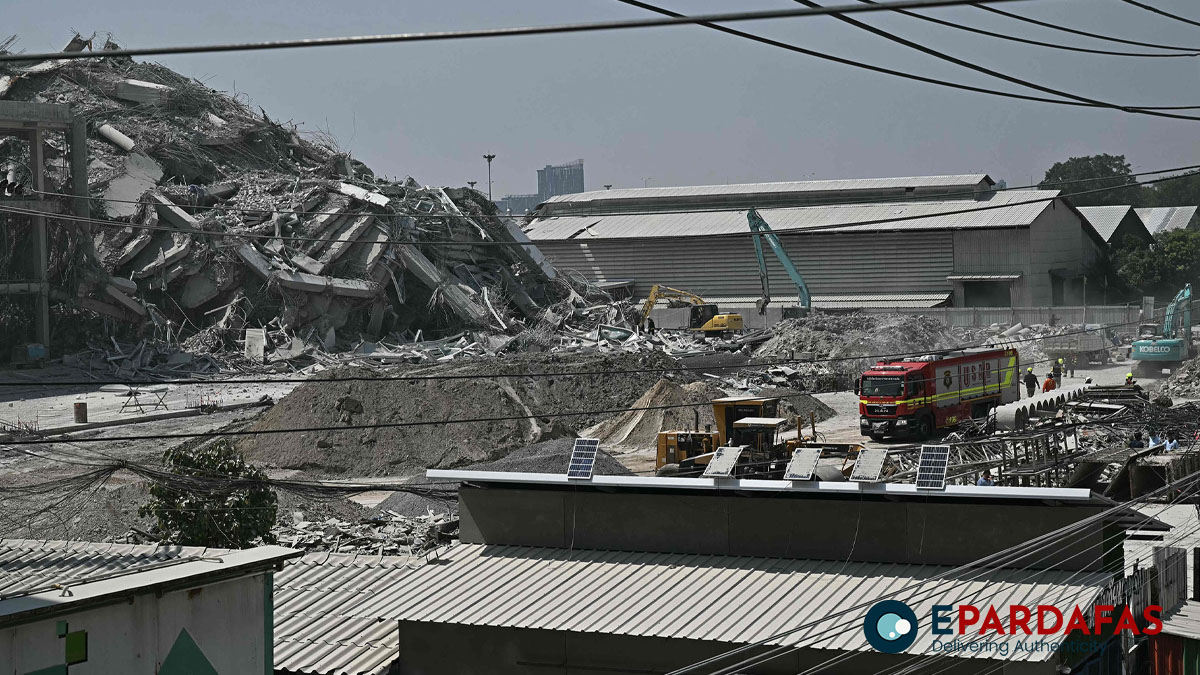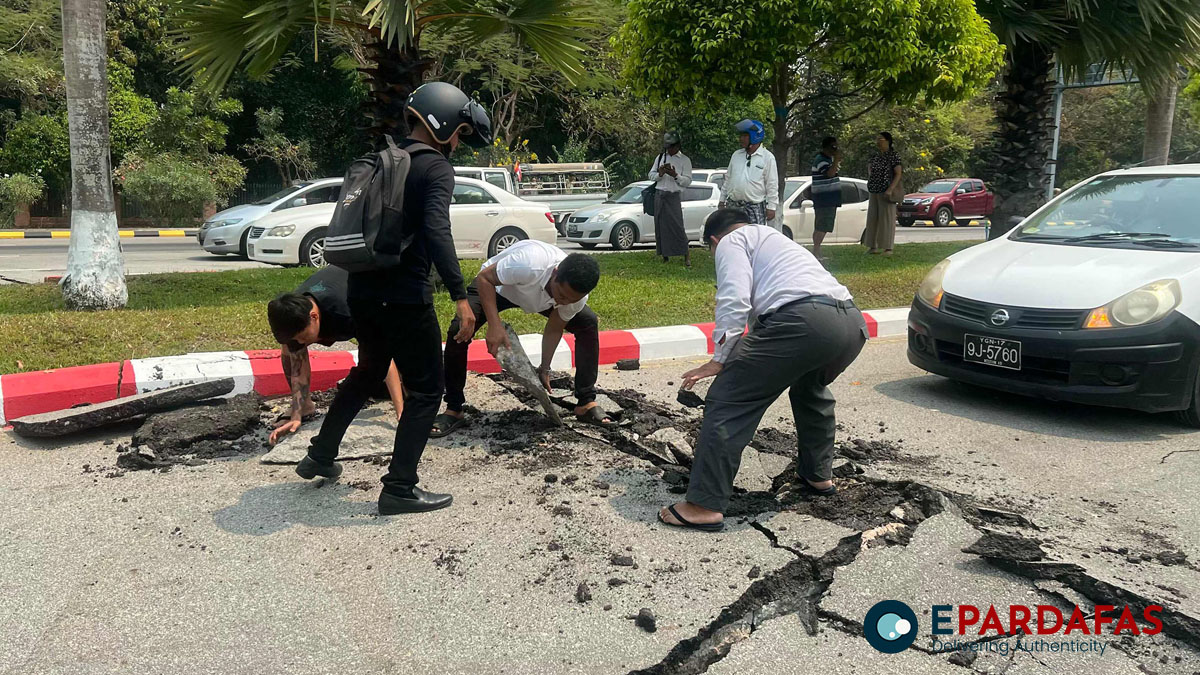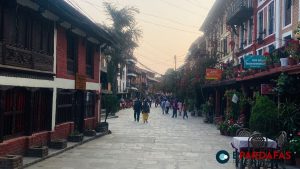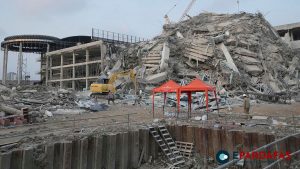A powerful 7.7-magnitude earthquake centered in Myanmar sent tremors across Thailand on Friday, shaking buildings in Bangkok and northern cities, triggering evacuations, and causing widespread panic. Thai authorities declared a state of emergency in Bangkok as a precautionary measure following reports of structural damage and disruption.
The earthquake, which struck around 1:30 p.m., originated at a shallow depth of 10 kilometers (6.2 miles) near Sagaing, Myanmar, according to the U.S. Geological Survey. A 6.4-magnitude aftershock followed minutes later, further intensifying the impact. Myanmar’s capital, Naypyidaw, saw roads buckle and ceilings collapse, forcing residents and workers to flee into the streets.

In Thailand, alarms rang across high-rise buildings in Bangkok as offices, hotels, and condominiums were swiftly evacuated. Residents stood in the streets, seeking shelter from the intense midday sun. Chiang Mai and other cities in northern Thailand also experienced strong tremors, with locals describing it as one of the most powerful quakes they had ever felt.
The quake’s force caused water to spill from rooftop swimming pools, and it led to the suspension of metro and light rail services in Bangkok. One of the most devastating incidents occurred in the city’s north, where a 30-story government office skyscraper under construction collapsed, trapping 43 workers under the debris. Emergency responders rushed to the site to conduct rescue operations.
Prime Minister Paetongtarn Shinawatra, who was on an official visit to Phuket, cut her trip short to hold an emergency meeting on the crisis. She confirmed that authorities were assessing the full extent of the damage and mobilizing resources to respond to the situation.
Tremors from the earthquake were also felt in China’s Yunnan province, where the Chinese seismic agency recorded the jolt as 7.9 in magnitude. Myanmar, known for its seismic activity due to the Sagaing Fault, has experienced multiple strong quakes in the past. A 6.8-magnitude earthquake in 2016 damaged historical temples in Bagan, while the country’s rapid urbanization has made its cities more vulnerable to disasters.
As rescue efforts continue in both Myanmar and Thailand, authorities remain on high alert for further aftershocks and potential casualties.















Comments